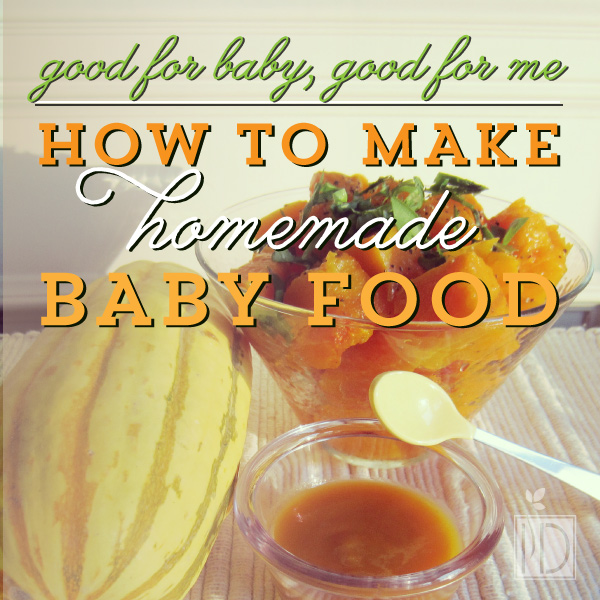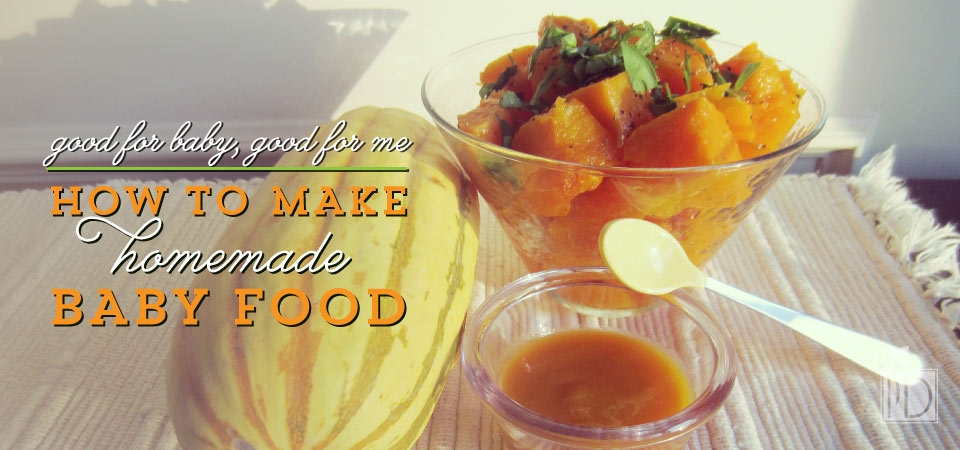 We’ve been making our own baby food for our 7-month-old from fresh produce and I’ve been pleasantly surprised by how easy and inexpensive it is. Even though my dinner routine is cooking while juggling the attention of both an active toddler and a baby who wants to snuggle all the time, I’ve been able to make plenty of baby food without much extra work or fancy equipment. Best of all, we’re all eating healthy, fresh produce as part of our everyday diet.
We’ve been making our own baby food for our 7-month-old from fresh produce and I’ve been pleasantly surprised by how easy and inexpensive it is. Even though my dinner routine is cooking while juggling the attention of both an active toddler and a baby who wants to snuggle all the time, I’ve been able to make plenty of baby food without much extra work or fancy equipment. Best of all, we’re all eating healthy, fresh produce as part of our everyday diet.
The secret to making our own baby food is so simple that I wonder why everyone doesn’t try it. Simply put, I make my baby’s food from the same food the rest of the family eats. And, because it’s natural to feed baby only the best and freshest fruit and vegetables, the rest of our family benefits.
It has taken a little bit of planning to get started but it’s been worth it for my family. Here is the path we took to start feeding our little one homemade food. Every baby is different, so trust your parental instincts on when your baby might be ready for solid food and what he should be fed.
- Educate yourself. While making food for baby is simple, it’s important to follow trusted guidelines of when to introduce solid food to baby and what food to feed him. The source I trusted to learn about making our own purees was the American Association of Pediatrics’ book Nutrition: What Every Parent Needs to Know. This AAP article summarizes the book’s chapter on baby food and is a good overview of how to transition to solid food. I paid careful attention to the introduction schedule, recommended order of foods, and allergen information.
- Gather your tools. The most surprising thing I learned is that I didn’t need to buy any gadgets. I made sure to clean my equipment carefully and store them in the same cabinet to make it easy for myself. So far, the only gear I’ve used is my blender to puree, a mesh strainer to drain food and to separate skins/peels from the food, ice cube trays to freeze the food, and freezer bags to store the prepared food. I had everything in my kitchen. As my son has grown older and can handle more texture, I’ve been able to start skipping the puree step and just mash cooked fruit and vegetables with a fork before thinning with water or broth.
- Plan your meals to include portions for baby. The best time-saving tip I’ve discovered is to cook baby’s food at the same time as the rest of the family’s meal. Typically, I just cook the fruit or vegetable without additional seasoning. For example, if I am baking sweet potatoes for our side dishes I will put one or two more in the oven to puree for baby. When the puree is done, I reserve one serving for that meal and put the rest in the ice cube tray.
- Be flexible and patient. I’ve found myself frustrated by my little guy not enjoying the flavor or texture of food that I lovingly prepared. Relying on patience and willingness to experiment with texture has served me well. Now my strategy is that if he doesn’t like a food I’ve introduced and experimenting with the texture and thickness doesn’t work, I’ll take a deep breath then freeze the rest to try it again at another time.
Have you tried preparing fresh baby food?


